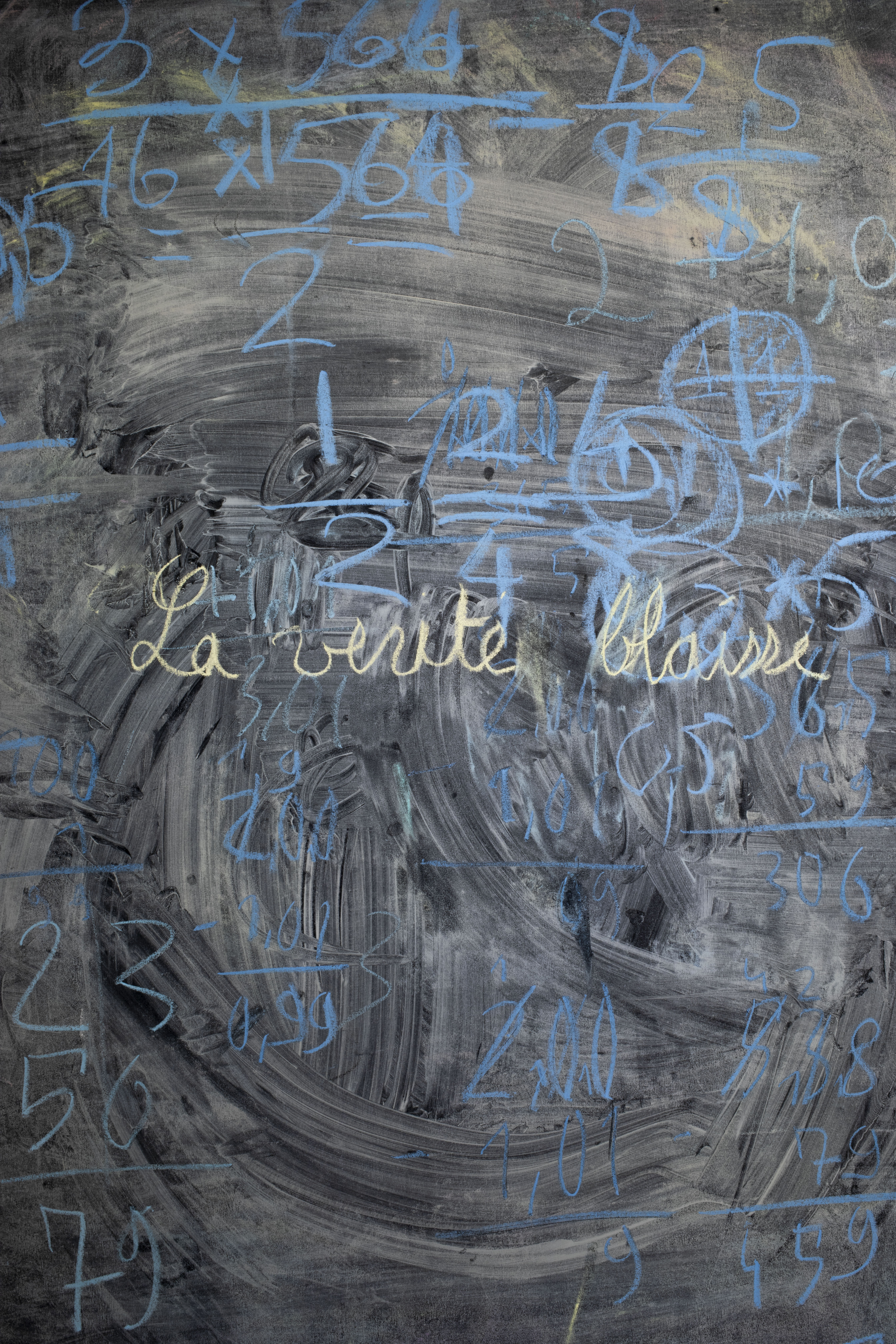Blackboard 20240509_S1A2614.

Lev Ilizirov — Grains of Chaos
In the hourglass of time, origins do not matter. There is no start or finish—just sand slowly solidifying as mass: mass both as the measure of an object’s inertia toward the accelerating forces of the universe, and as a liturgical mass of beliefs and signification we transpose onto this accumulated castle of sand.
Sometimes futilely, at times fruitfully, but mostly—chaotically.
Ilizirov is no arbiter of time. Within this chaos, he merely sets out to stratify moments, obsessively embalming them within the photographic process. Perhaps to prove that our human grandeur is but a tiny speck amidst this ever-expanding universe; that we are mere passengers, swiftly blown away by its mercuriality. At this microscopic level, each tiny grain of sand operates as a quantum—non-deterministically. This grain might appear in two places at once, or disappear in an instant, turning into a tiny puff of energy; or further still, it might be so entangled, it is now everywhere we look.
Perhaps we ought to look at Ilizirov’s mounting body of work in just this way. Each photograph, a grain of sand, operating seemingly chaotically within a system. A system that wants to produce signification, order, and ritual at all times—but that falters to hide its volatile nature. It is here, at his macroscopic level, that all these grains form structures, both as architectures and as beliefs. It is here that all of Ilizirov’s captured grains come together under the loaded gaze of those who look.
It is not by chance, then, that these grains are visualised via the series Blackboards (2016), where sediments of slate—formed by the pressure of time weighing down on clay, volcanic ash, and shale—make the board we now write on with chalk. And that very chalk used by Ilizirov is itself the product of sedimentary carbonate rock, made from the tiny calcified remains of plankton over 100 million years ago. The apparent randomness of how dead plankton now aids knowledge, and even games (Chess Game with Pim Blokker, 2013), is a chaotic reminder of the insane causality the universe is capable of. A testament to impermanence, the shape-shifting of nature, and the volatility of our belief systems—which can swiftly and easily be swiped away from blackboards, forever lost in the aeons of time, if not captured by Ilizirov’s lens.
And it is no coincidence, then, that in the installation Untitled Video One (2010), Ilizirov printed 9,000 photographs from his collection and erratically had them blown away by a leaf blower. The initial location of a single photograph—a grain of sand—is a completely arbitrary reference within space or time: for the same photograph may reveal itself once, then disappear, and at the same time appear to us twice—each time building new ways of seeing and experiencing the performance of time.
Further still, it is not incidental that many of Ilizirov’s photographs document the sedimentation of grains, as in the Sand series (2023), where this mass of grains forms mountains. And yet, it is not just sandstone that deposits, layer upon layer. It is the heavy strata of signification too—so the mass of grains now becomes liturgical. Suddenly, we’re privy to an architecture of memory, violence, and erosion all deeply inscribed into the Holy Land’s bedrock—and the heavy pages of history books.
Without sand, there’d be no (depiction of) time. Without photographs, there’d be no (trace of) memory. As the individual photographs-as-grains stack and layer up, we start seeing significance inscribed within the layers, just as we do with the strata of rock. From here, meaning is produced—as if carved in an ancient language in the stone that Ilizirov’s photography helps unfold.
text - Gabriella Gasparini
Contact
- Email:
- lev[dot]ilizirov[at]gmail[dot]com
- Instagram:
- @lev.ilizirov
- @lev.ilizirov.archive